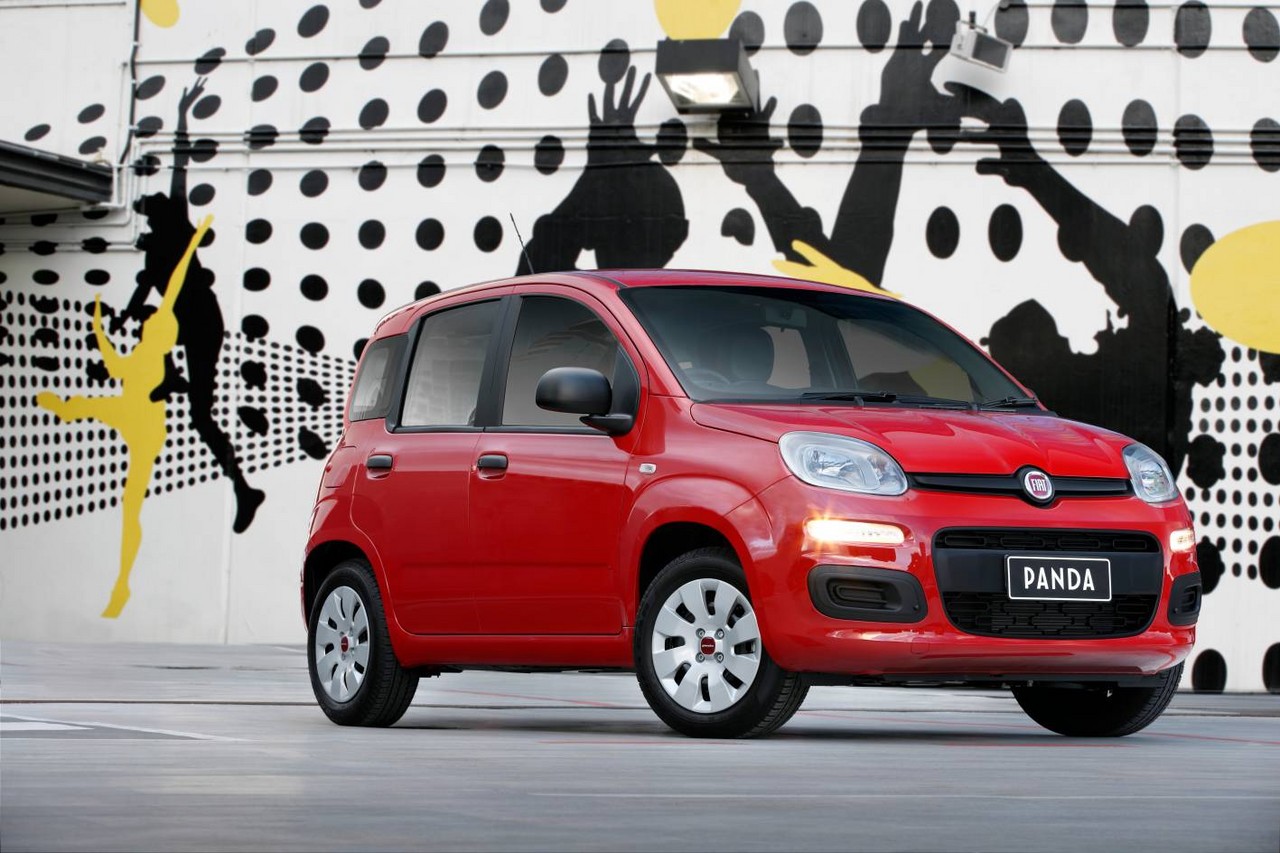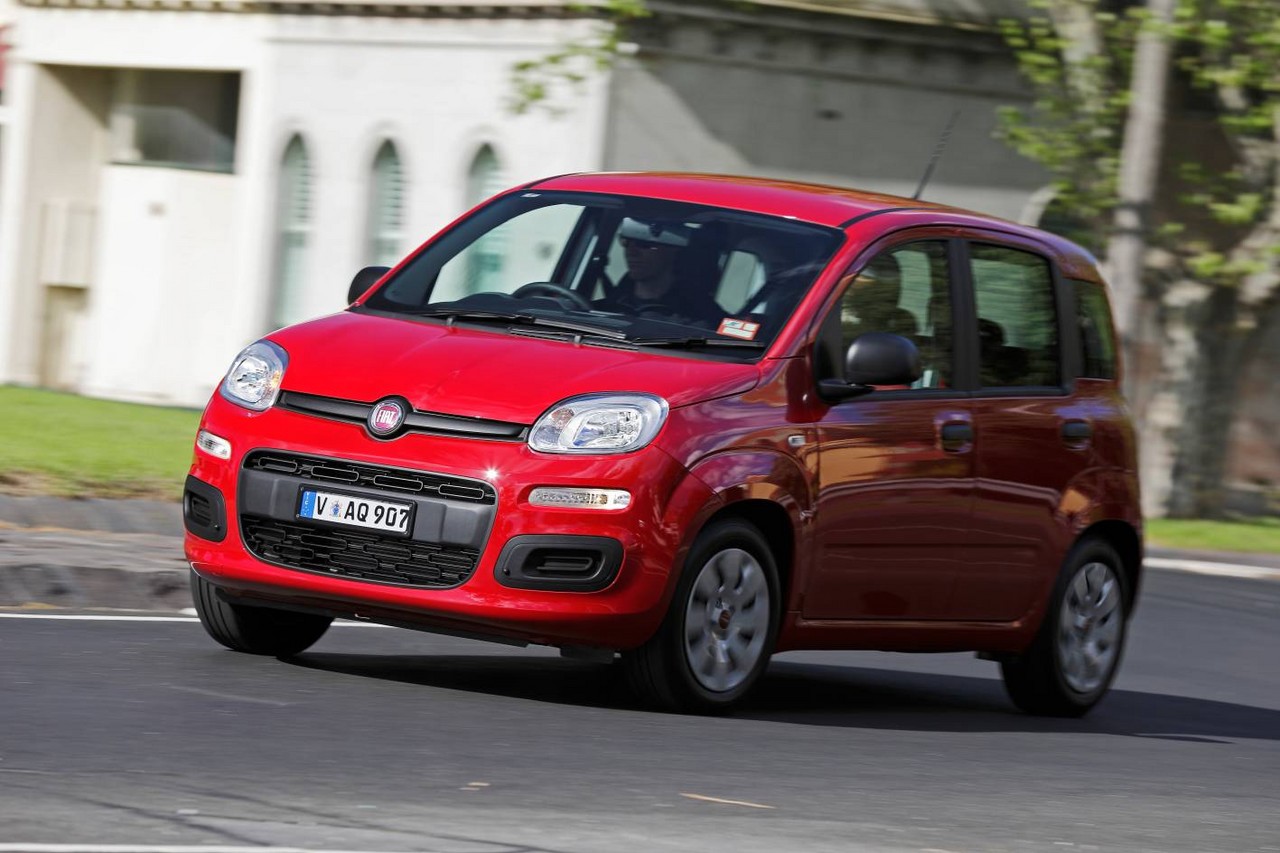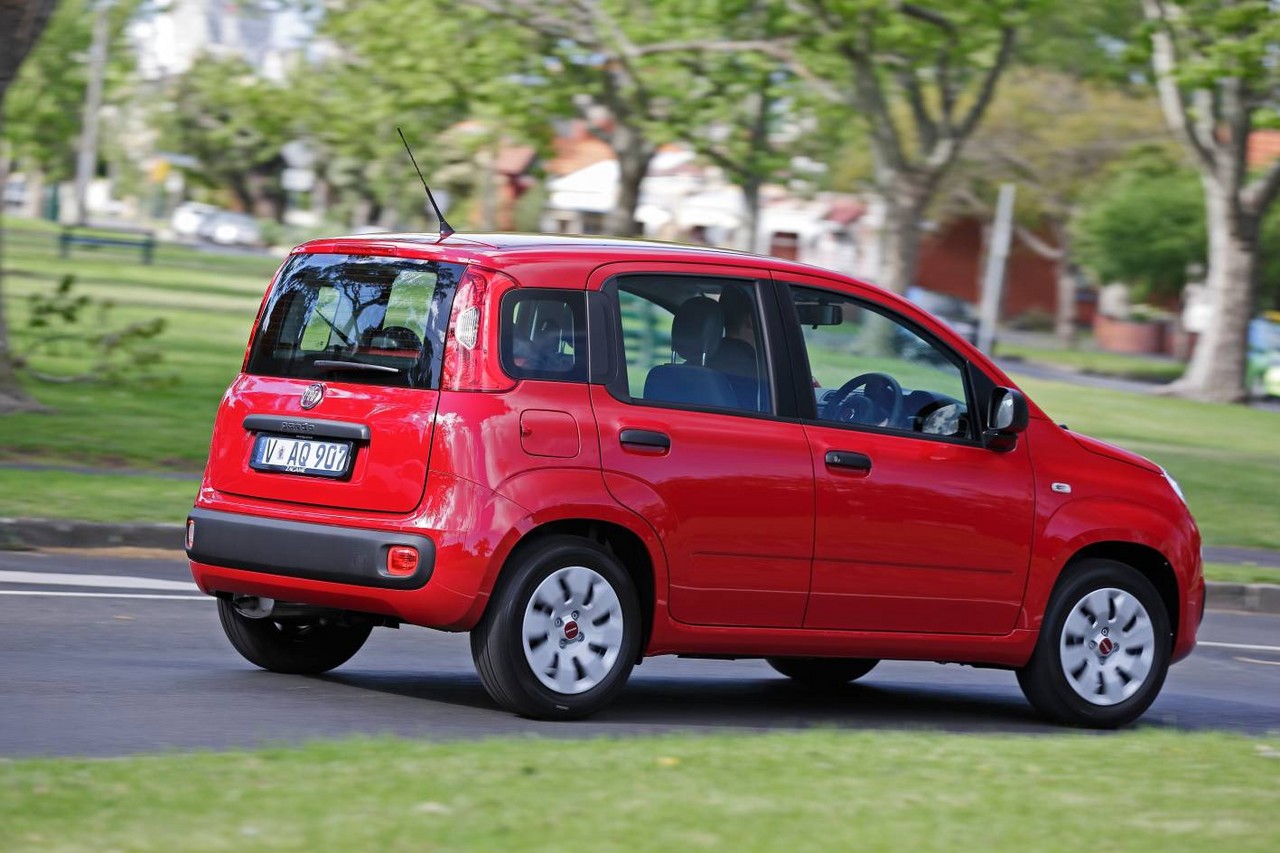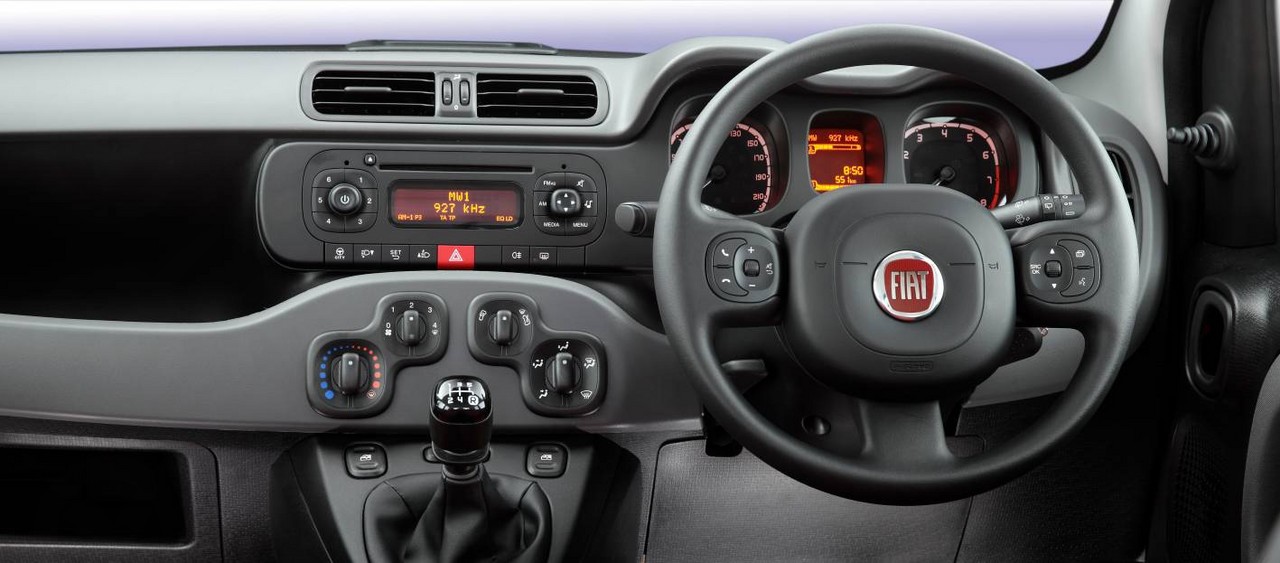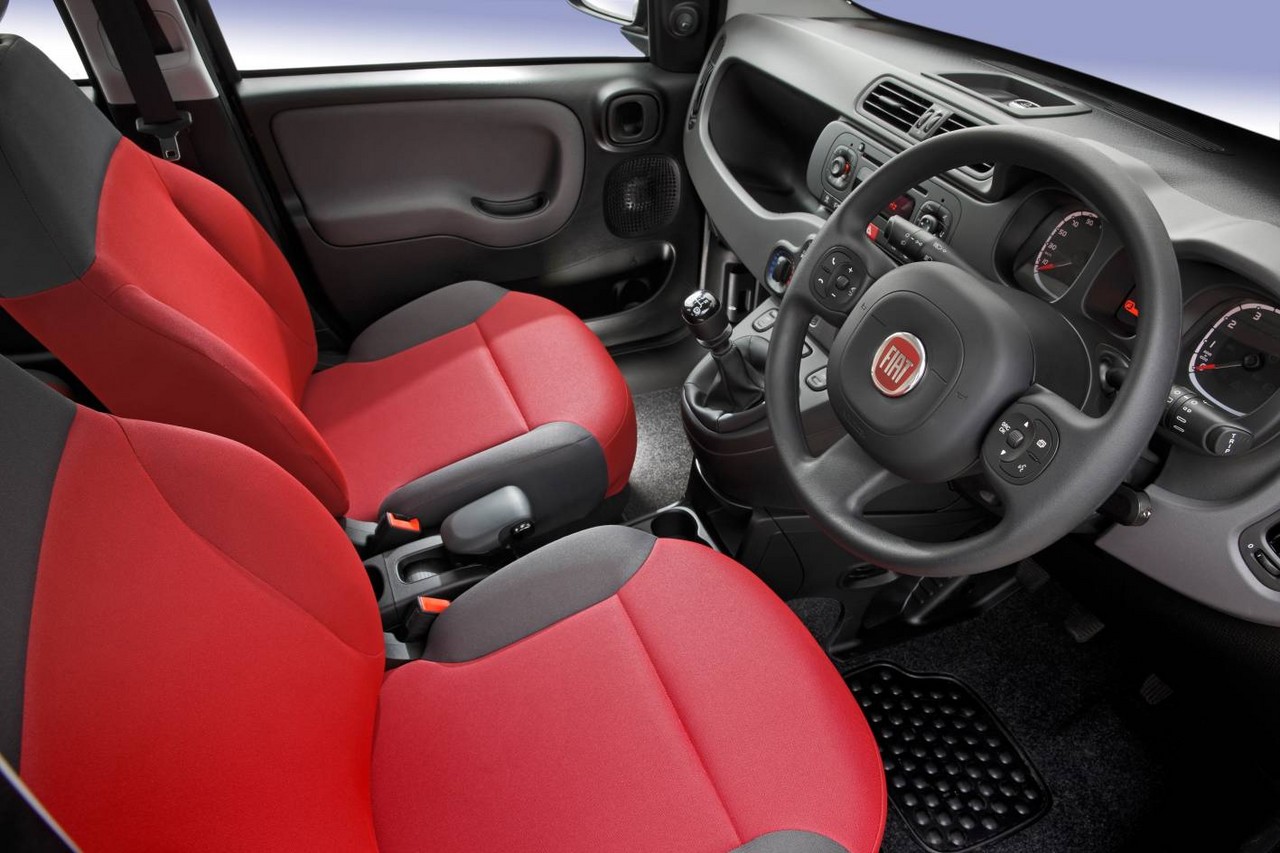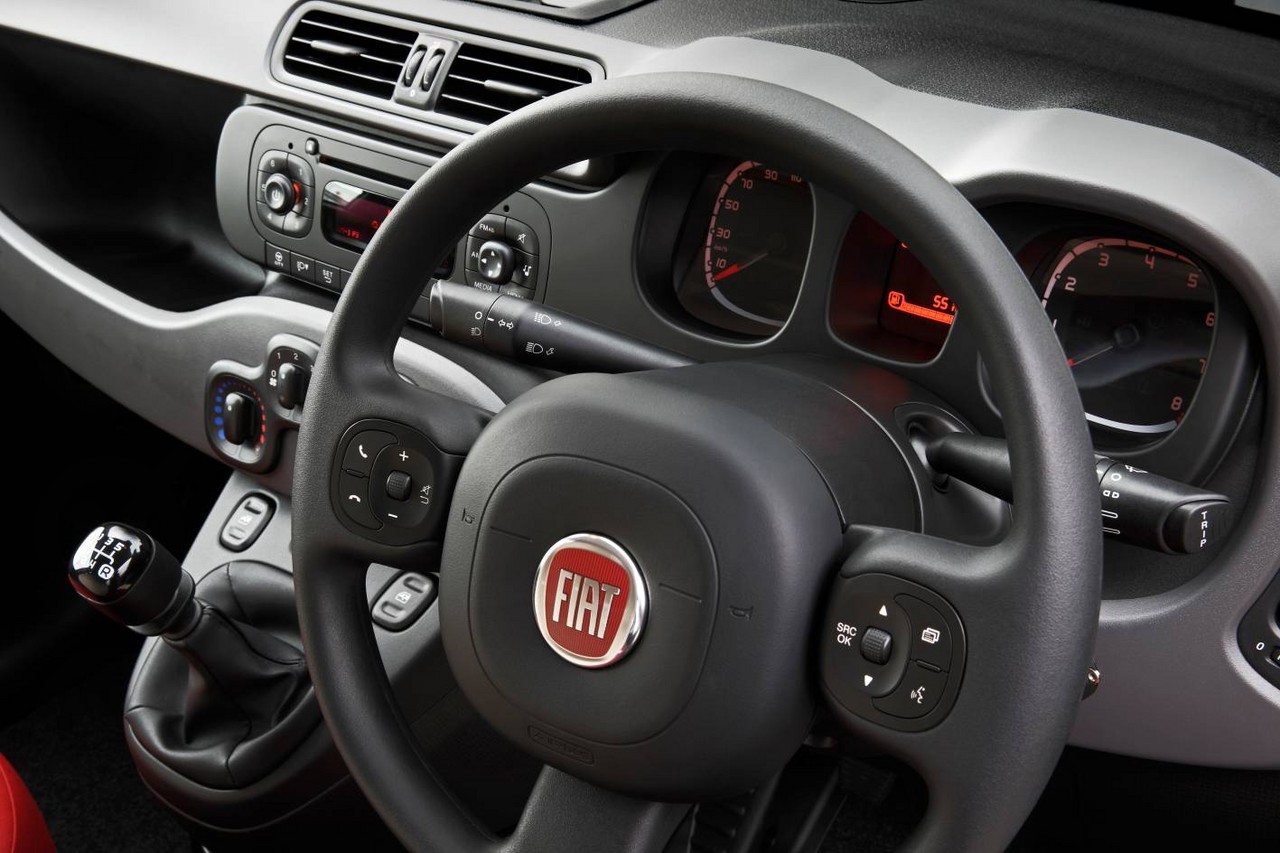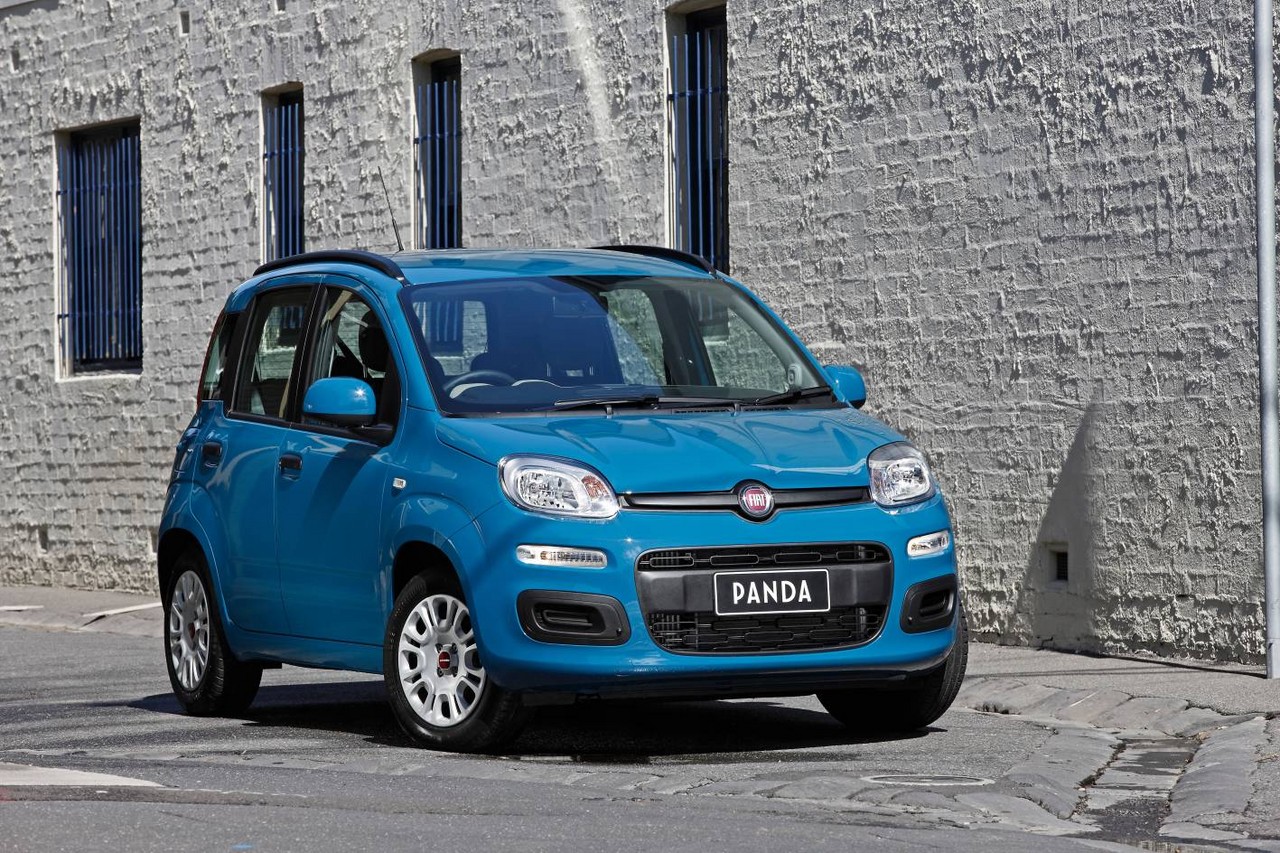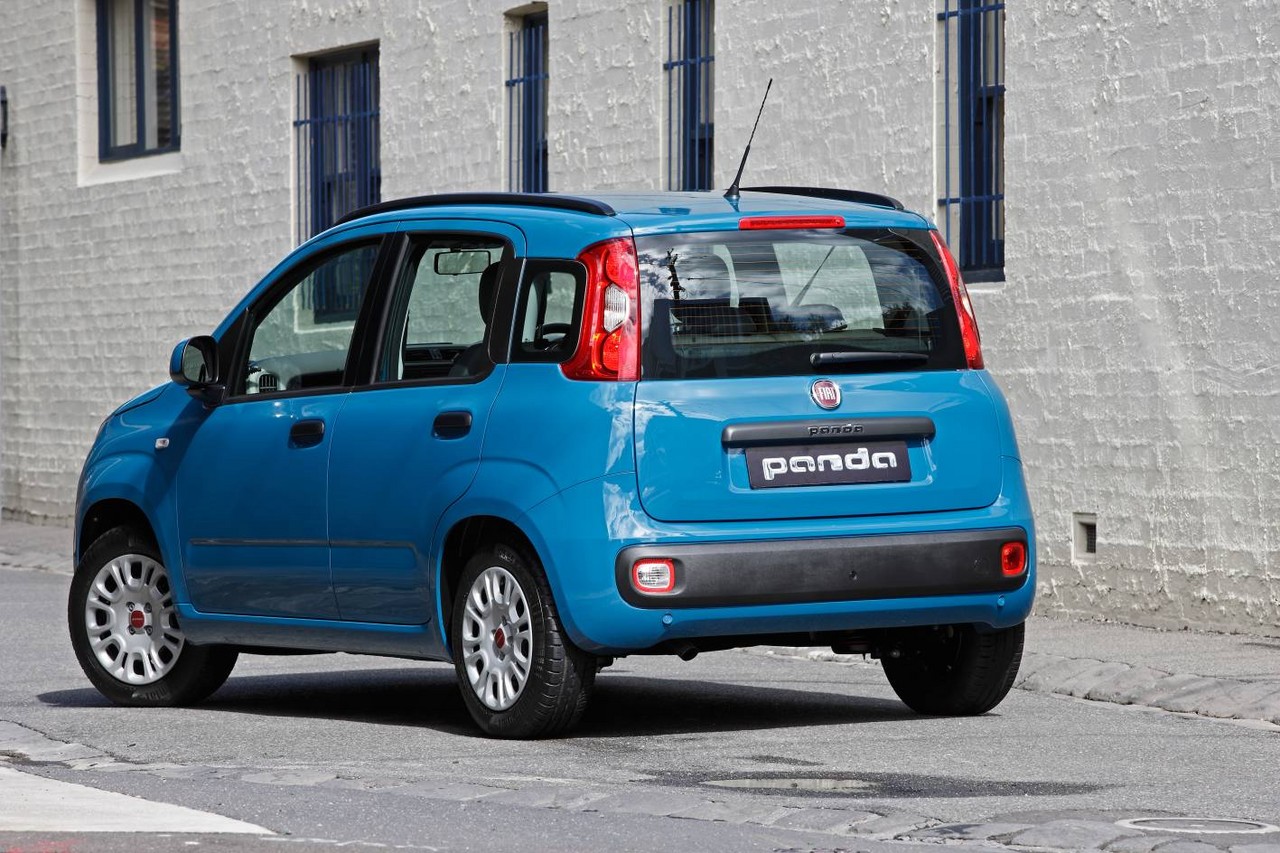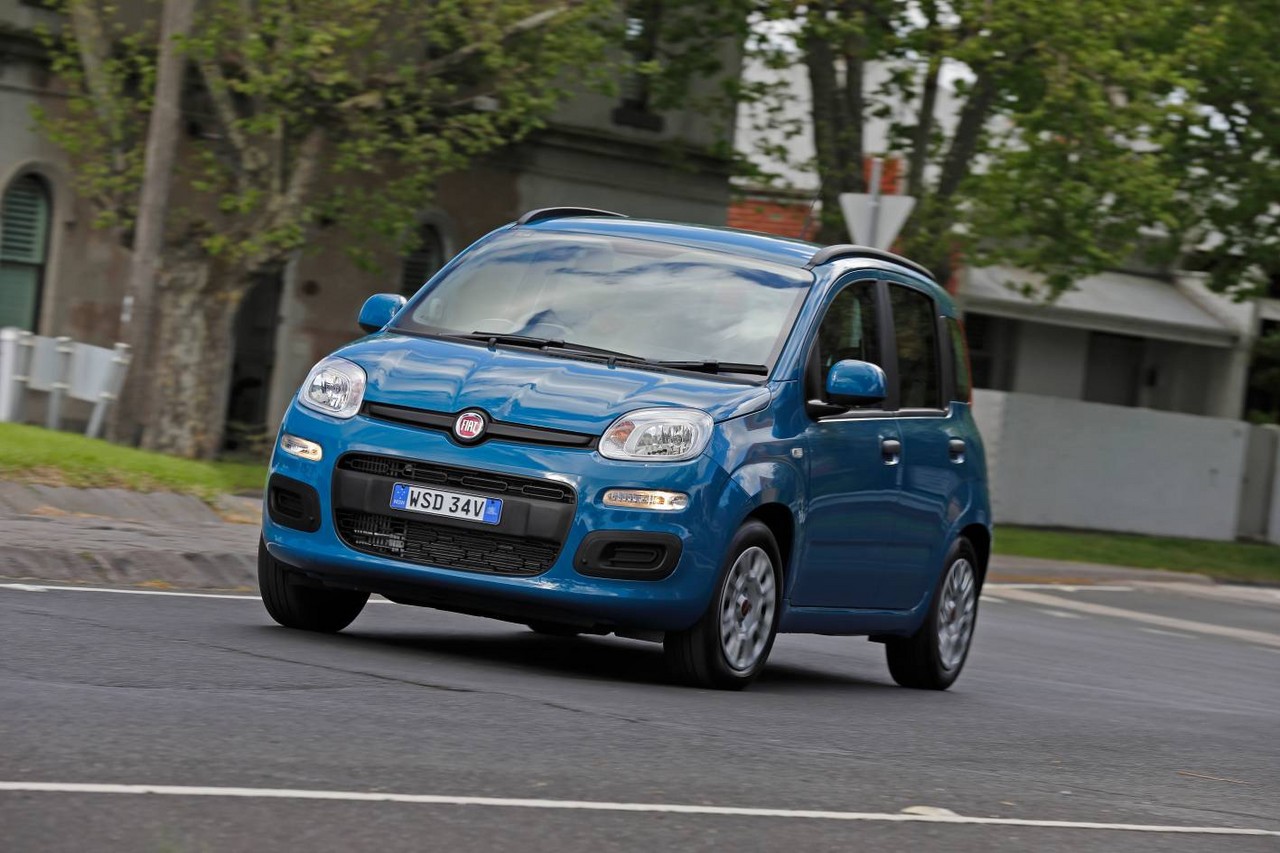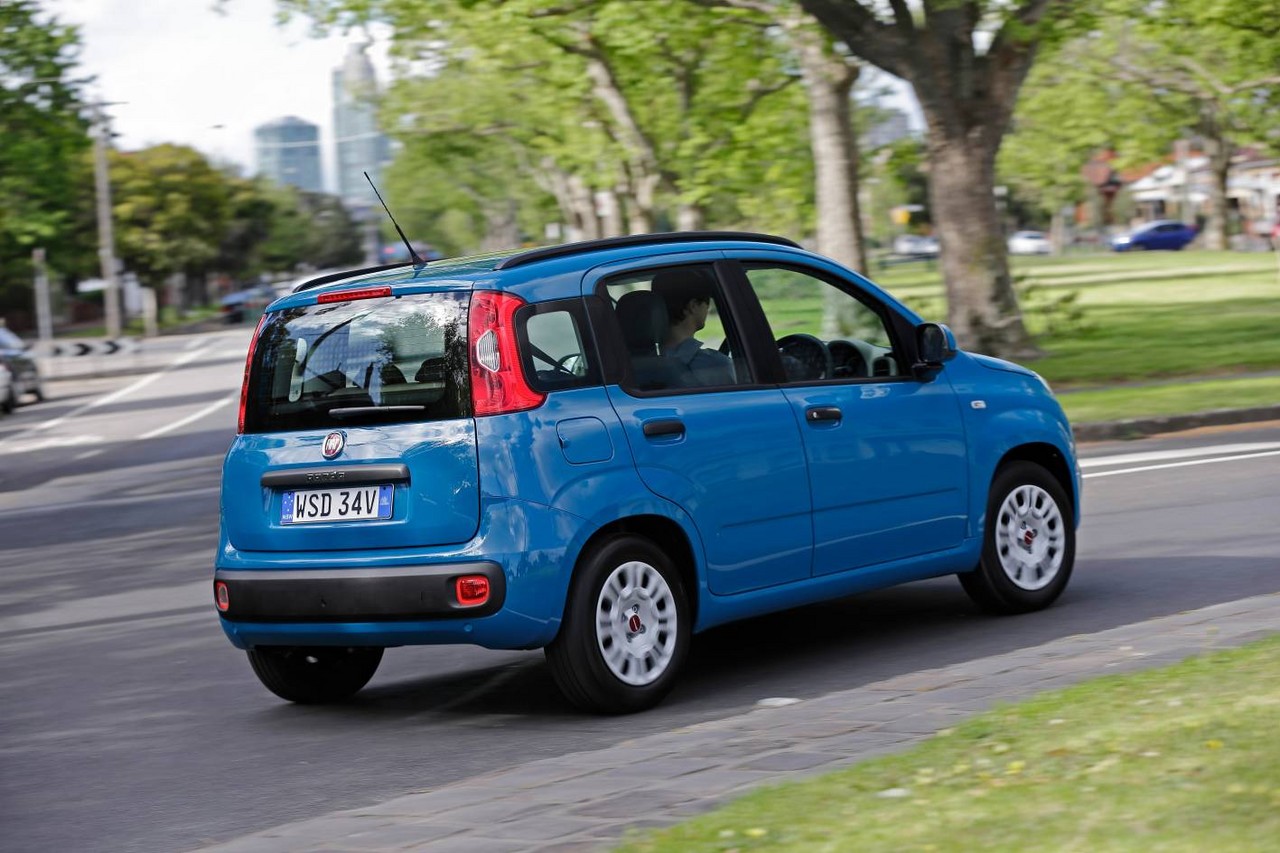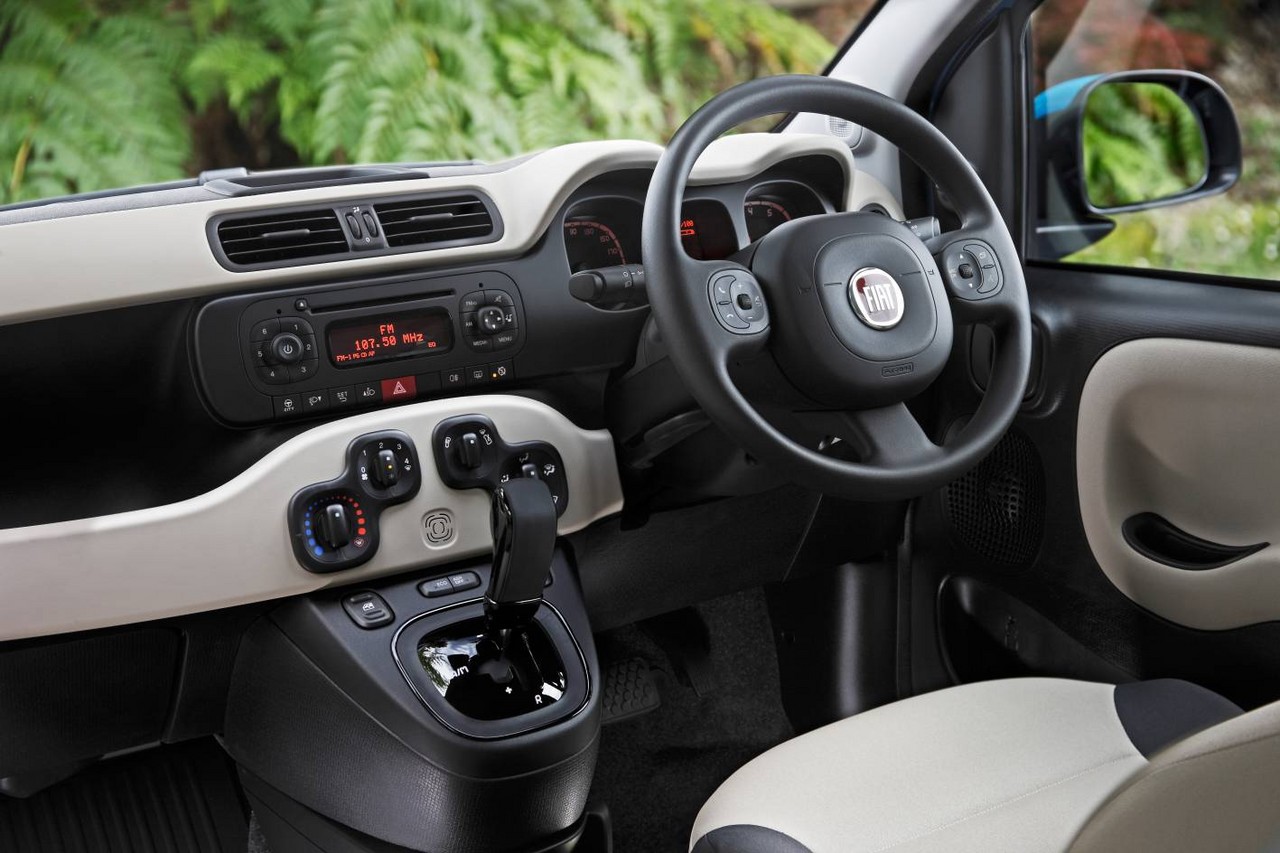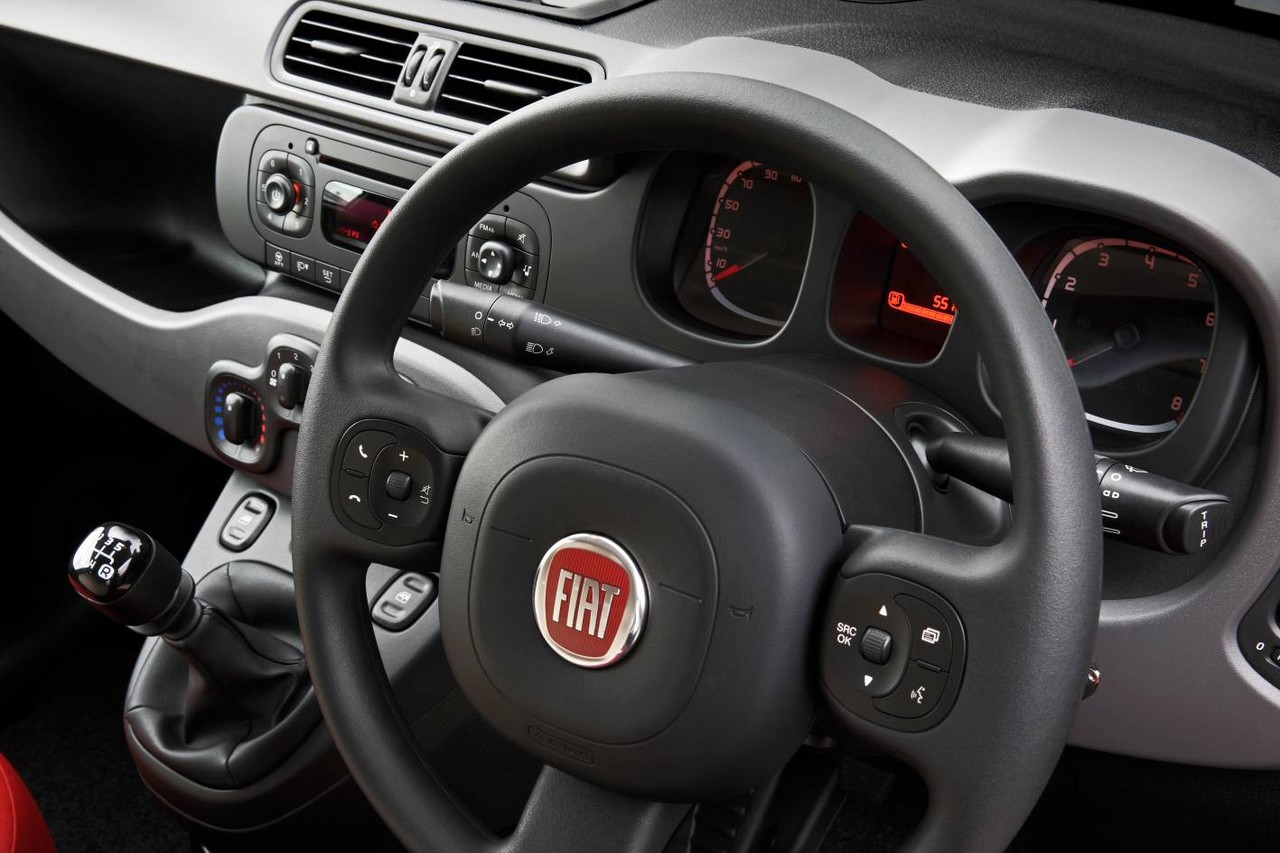
- Perky 1.2-litre turbo engine
- Frugal 1.3-litre turbo-diesel engine
- Comfortable ride and enjoyable to drive
- Distinctive design
- Hesistant semi-automatic ‘Dualogic’ transmission
- Limited rear legroom
- Small boot
- High retail prices
Overview
Released in October 2013, the Fiat Panda was a five-door hatchback. Manufactured in Naples, Italy, the Panda range consisted of front-wheel drive Pop, Easy and Lounge variants, and all-wheel drive Trekking variants.
Fiat Panda engines
Of the engines:
- For Pop variants, the 1.2-litre (1242 cc) FIRE (‘Fully Integrated Robotised Engine’) four-cylinder petrol engine had a cast iron block, an alloy cylinder head, a single overhead camshaft (belt-driven), two valves per cylinder, variable intake valve timing and a compression ratio of 11.1:1;
- For Easy and Lounge variants, the 875 cc TwinAir petrol engine had a cast iron block, an alloy cylinder head, a single turbocharger, a single overhead camshaft, four valves per cylinder, variable intake valve lift, a counterbalance shaft and a compression ratio of 10.0:1. Unlike conventional engines which use a throttle valve to regulate airflow into cylinders, the TwinAir engine had electro-hydraulically actuated inlet valves which controlled airflow cylinders directly for greater efficiency; and,
- For Trekking variants, the 1.2-litre (1248 cc) MultiJet 2 turbo-diesel engine had a cast iron block, an alloy cylinder head, a fixed geometry turbocharger, four valves per cylinder and a compression ratio of 16.8:1.
Furthermore, both the TwinAir and MultiJet 2 had a Start&Stop function which enabled the engine to shut down when the vehicle was stationary.
Body and dimensions
Underpinned by the Fiat/Mini platform, the Panda was 3653 mm long, 1643 mm wide (not including mirrors), 1551 mm tall and had a 2300 mm long wheelbase; its drag coefficient was 0.32 Cd. The Trekking variants, however, were 33 mm longer (at 3686 mm), 29 mm wider (1672 mm) and 54 mm taller (1605 mm).
Steering and suspension
All Pandas had electric power-assisted steering, MacPherson strut front suspension with lower transverse wishbones and a torsion beam rear axle. Furthermore, the steering included a ‘City’ function – activated by a dash-mounted button – which provided greater power assistance for low-speed manoeuvres.
| Engine | Variant | Trans. | Peak power | Peak torque |
|---|---|---|---|---|
| 1.2-litre petrol I4 (FIRE) |
Pop | 5sp man. | 51 kW at 5500 rpm | 102 Nm at 3000 rpm |
| 0.9-litre turbo petrol I2 (TwinAir) |
Easy | 5sp man., 5sp semi-auto |
63 kW at 5500 rpm | 145 Nm at 1900 rpm |
| Lounge | 5sp semi-auto | |||
| 1.2-litre turbo-diesel I4 (MultiJet 2) | Trekking | 5sp man. | 55 kW at 4000 rpm | 190 Nm at 1500 rpm |
Panda Trekking: all-wheel drive system
The full-time all-wheel drive system for the Panda Trekking utilised an electronically controlled coupling. Ninety-eight (98) per cent of the engine’s torque was directed to the front wheels in normal conditions, though an electronic control unit continually assessed conditions to determine whether additional torque should be directed to the rear axle. If required, the coupling could engage to direct up to 50 per cent of the engine’s torque to the rear wheels.
The Panda Trekking was also fitted with electronic differential locks (EDLs) which could brake the wheels with less grip to transfer torque to the wheels with grip (i.e. cross-axle torque transfer). Operational at speeds below 50 km/h, the EDLs could be activated manually by pressing the button behind the gear lever.
Safety equipment
Standard safety equipment for the Panda included dual front airbags, front seat-mounted side airbags, full-length curtain airbags, ABS, brake assist, electronic stability control, traction control and front seatbelts with pretensioners and load limiters.
Unique within the range, Lounge variants were fitted with Fiat’s Low Speed Collision Mitigation (LSCM) system. Using a laser sensor, the LSCM system could detect obstacles in front of the vehicle that were more than 40 per cent of the width of the vehicle (around 660 mm) and for which the angle of impact would be less than 30 degrees. If a collision was anticipated, engine torque would be reduced if the accelerator pedal had not been released and the brake ‘Prefill’ function would prime the braking system for faster response. When activated, the Automatic Emergency Braking (AEB) function would apply the brakes to either prevent or reduce the severity of a collision.
The Panda was fitted with 257 mm by 12 mm front brake discs and 203 mm by 38 mm rear drum brakes. While Pop variants had solid front brake discs, the Easy, Lounge and Trekking variants had ventilated front discs.
Euro NCAP testing
In Euro NCAP testing , the Panda – when not fitted with side airbags – received a four star safety rating which included an 82 per cent adult occupant protection rating and a 63 per cent child occupant protection rating. In the offset crash test, protection for the driver’s head and feet were rated as good, though chest, upper leg and knee protection was rated as adequate. In the side impact test, chest protection was rated as marginal and, in the more severe pole test, chest protection was weak.
Under ANCAP’s methodology, this testing resulted in a five star adult occupant protection rating with a score of 32.78 out of 37.
Features
Standard features for the Panda Pop included 14 x 5.5J steel wheels with 175/65 R14 82T tyres, four speaker sound system with a CD player, MP3-compatibility, auxiliary inputs (3.5 mm/USB/iPod) and Bluetooth connectivity, ‘Tricot’ seat fabric, air conditioning, daytime running lights, multi-function steering wheel, 60/40 split and folding rear seats, remote central locking, power front windows, a height adjustable steering wheel and an immobiliser.
Fiat’s ‘Blue&Me’ connectivity system was fitted as standard across the range, enabling synchronisation of Bluetooth compatible devices. A navigation device docking port was also fitted as standard, though the Blue&Me TomTom navigation system was an extra-cost option.
Relative to the Pop variants, the Panda Easy added a six speaker sound system, ‘Rubik’ seat fabric, rear parking sensors, roof rails and a ‘Comfort kit’ which consisted of rear grab handles, driver’s side glasses holder and height adjustable seat belts. Visually, the Easy variants could be identified by their body-coloured mirrors.
The Panda Lounge was further equipped with 15 x 6.0J alloy wheels with 185/55 R15 82H tyres, climate control air conditioning, front fog lights, two-tone leather wrapped steering wheel, power mirrors, a height adjustable driver’s seat, gloss black dashboard trim and rear privacy glass. The Lounge variants were also distinguished by their body-coloured door handles and protective side mouldings.
Finally, the Panda Trekking had 15 x 6.0J alloy wheels with 175/65 R15 84T tyres, dual-tone seat fabric, heated front seats, leather-wrapped gear shift knob, a heated windscreen and a unique body kit.
Related links
- Equipment: Fiat Panda (October 2013)
- Specifications: Fiat Panda (October 2013)
- Behind the Wheel: 2014 Fiat Panda Pop Review
- Wikipedia.org: Fiat Panda
